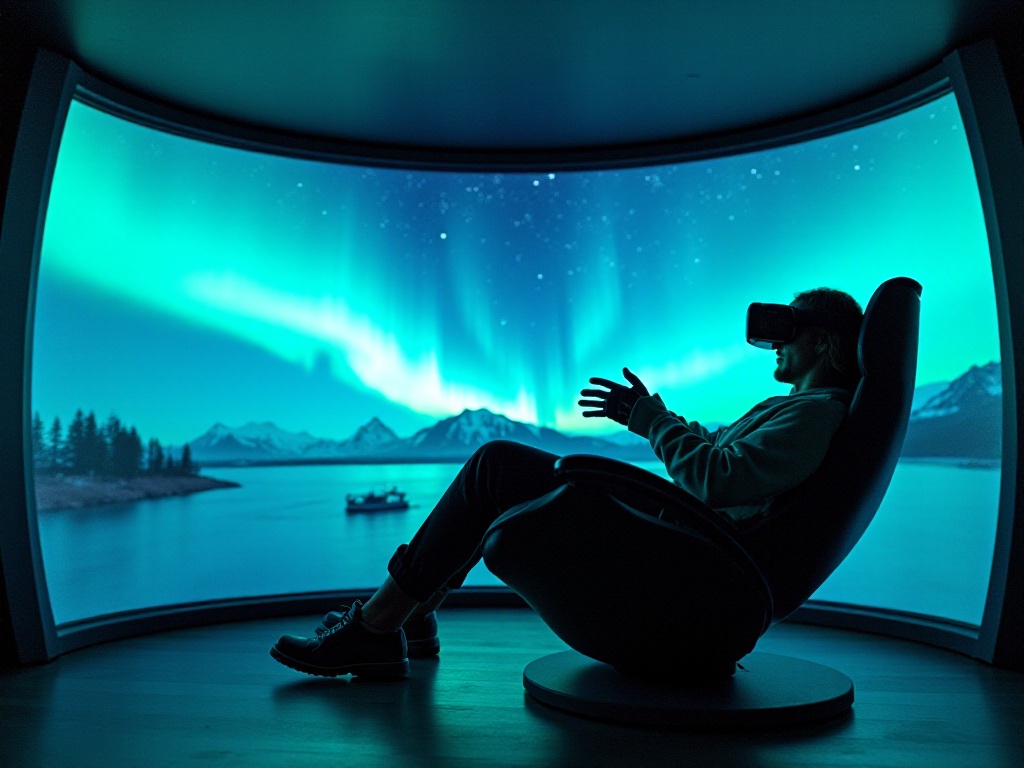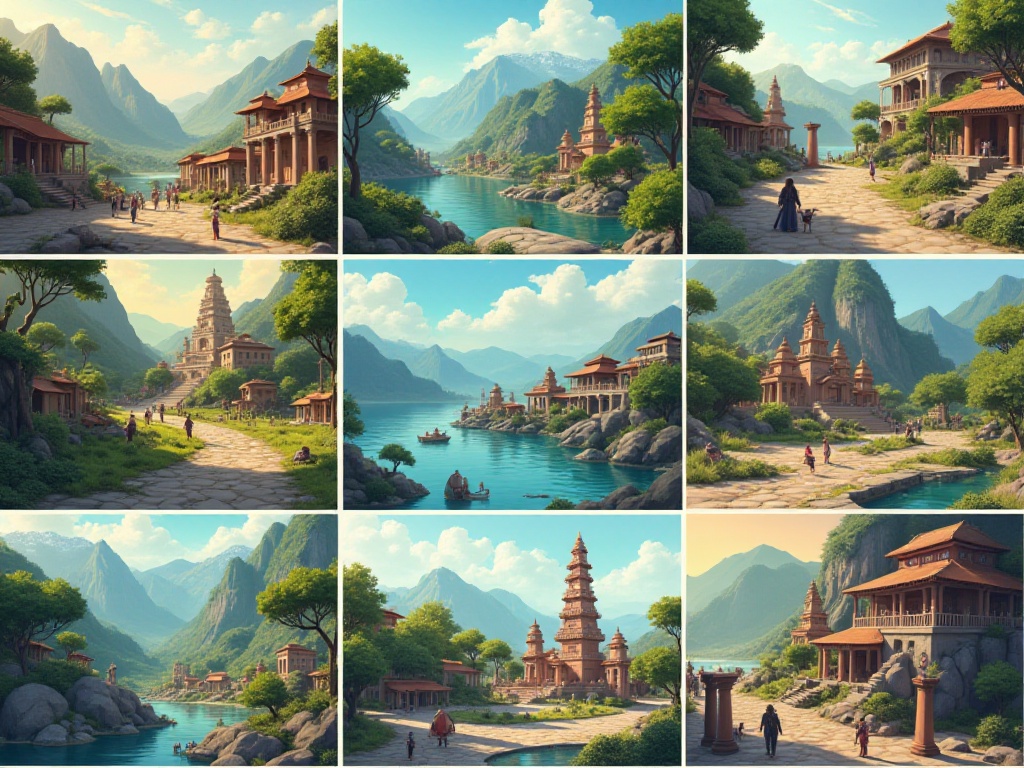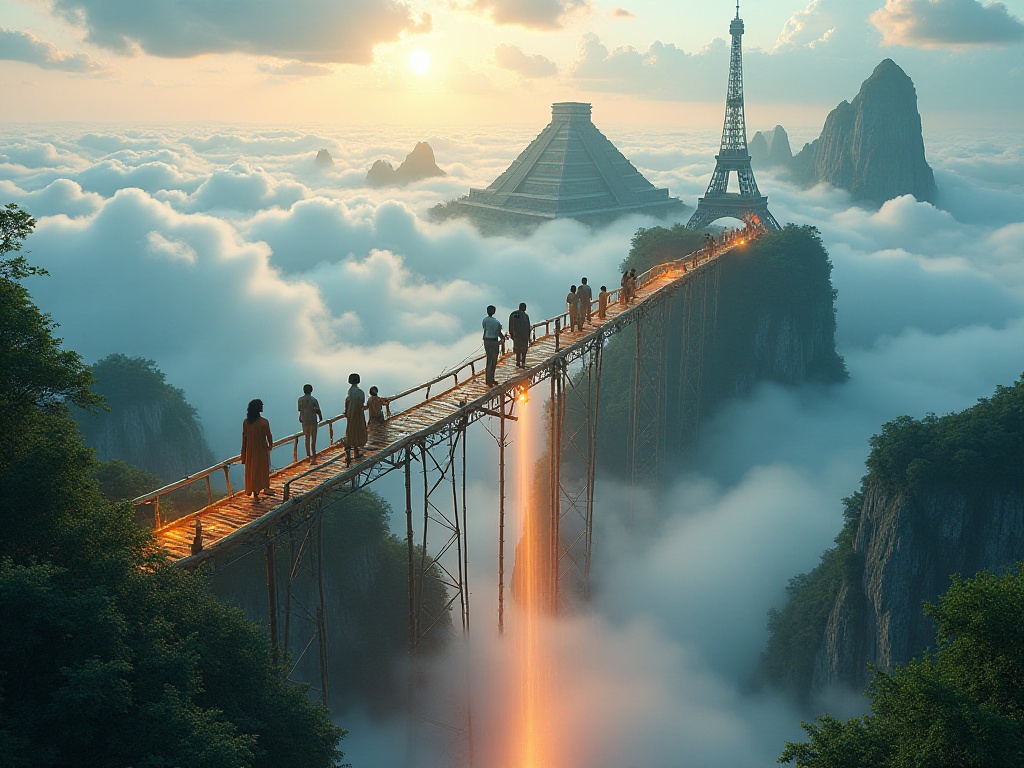Have you ever wondered what travel will be like in the future?
Recently, I experienced a special journey. No boarding pass, no suitcase, not even a passport was needed. Just by putting on VR equipment, I could instantly transport from my home in Beijing to Notre-Dame Cathedral, strolling under its Gothic vaults and listening to the melodious sacred music of the organ. This isn't a scene from science fiction, but a new experience brought to us by virtual tourism.
When it comes to virtual tourism, we must mention its core technological support. Today's virtual tourism has far exceeded the scope of early 360-degree panoramic photos. Through VR technology, we can achieve six degrees of freedom in immersive experiences, meaning you can not only look around but also move freely in virtual space.
For instance, when visiting the Louvre, you can walk up to the Mona Lisa and carefully observe every detail. Through high-precision 3D scanning technology, every crack in the painting and every texture of the paint is clearly visible. The authenticity of this experience sometimes even surpasses an in-person visit—after all, at the physical Louvre, you often need to peer through crowds and bulletproof glass to catch a glimpse of the Mona Lisa.
I remember being stunned during my first virtual tourism experience. It was a virtual journey exploring Machu Picchu. Through precise geographic information system data and real-scene modeling, every stone and every step was perfectly recreated. What amazed me even more was that under the guidance of a virtual tour guide, I saw this lost city in its prime—through AR technology, the ruined temples restored their former glory, and Inca people in colorful clothing appeared on the streets.
This time-travel-like experience is something traditional tourism cannot achieve. In reality, we can only see ruins and rely on imagination to reconstruct historical scenes. But in the virtual world, technology brings history to life before our eyes.
According to global virtual tourism market research reports, the virtual tourism market size reached $7 billion in 2023 and is expected to exceed $20 billion by 2028, with a compound annual growth rate of 23.5%. This growth rate far exceeds traditional tourism.
Notably, during the pandemic, the number of virtual tourism users surged. Statistics show that global virtual tourism app downloads increased by 458% year-over-year in 2020. Even in the post-pandemic era, this growth trend continues. In the first quarter of 2023, major global virtual tourism platforms had over 80 million monthly active users, with users aged 25-40 accounting for 65%.
Virtual tourism brings not just technological innovation but a profound transformation in how we travel. It blurs the boundaries between physical and digital, redefining the concept of "presence."
Have you considered how the meaning of physical travel might change when we can easily traverse the world in the virtual realm? Perhaps future travel will become a hybrid experience: we might preview destinations in the virtual world, deeply understand local culture and history, before deciding whether to make an actual visit.
Looking ahead, virtual tourism has enormous room for development. With breakthroughs in brain-computer interface technology, we might no longer need bulky VR equipment—just a small neural sensor could directly transmit travel experiences to our brains.
Advances in haptic simulation technology will also bring more authentic sensory experiences. Imagine feeling the slightly salty mist of Venice's canals, smelling the aroma of Tuscan vineyards, touching the rough stones of the Egyptian pyramids. All this will become possible in the virtual world.
If you want to try virtual tourism, I recommend starting with some classic sites. For example, the Forbidden City has launched an excellent virtual tour system where you can freely walk between palaces and see many areas normally closed to the public.
For first-time users, my suggestions are:
First, choose suitable hardware. While mainstream VR headsets can handle basic virtual tourism needs, if budget allows, consider high-end equipment with eye-tracking capabilities for better immersion.
Second, gradually adapt to the virtual environment. It's recommended to limit each experience to 30 minutes and take appropriate breaks.
Virtual tourism is opening up a world of unprecedented possibilities. It's not meant to replace traditional tourism but to provide a new way of experiencing. Like when I visited Notre-Dame Cathedral in the virtual world, that sense of transcending time and space gave me a new understanding of travel.
What do you think future travel will look like? Will it follow traditional patterns, embrace this digital revolution, or find a balance between the two?
These questions are worth pondering for each of us. After all, the essence of travel isn't just about reaching a destination, but exploring the unknown and understanding the world. And virtual tourism is opening new pathways for this exploration and understanding.
 Previous
Previous



